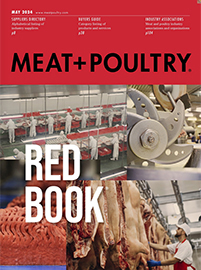WASHINGTON – The US Department of Agriculture’s (USDA) Economic Research Service (ERS) published a new report about the National School Lunch Program (NSLP), which provides tens of millions of students with meals each year. Known as “The National School Lunch Program: Background, Trends and Issues, 2024 Edition,” the report summarizes the NSLP through the years, including profiles of participants, program changes made since its last report in 2008, the financial status of the program, the nutritional quality of the lunches provided and the nutritional impact of the program’s meals on participating school-age kids.
Some of the program’s most significant changes were made as a result of the Healthy, Hunger-Free Kids Act of 2010 (HHFKA) and the impact of the pandemic. Since the HHFKA, nutrition standards were updated; schools serving low-income students were able to provide students’ meals at no cost to them; and a focus on utilizing food from local sources in the preparation of the meals. Universal Free Meals (UFMs) were permitted at all schools in response to the pandemic in addition to increasing funding for the program. Requirements of when and where the meals were consumed were waived during the pandemic as well as part of modifications that expired at the end of the school year in 2022.
In terms of cost and participation from 1969 to 2022, 236 billion lunches were served as part of the NSLP. Lunches served peaked in 2010 at 5.3 billion and decreased each year since then, to about 4.9 billion in 2019. COVID-19 caused additional declines in meals served temporarily but that number rebounded to pre-pandemic levels in 2022. Participation among public school students declined from about 58% in 2010 to about 58% in 2019, when an average of nearly 30 million students per day participated in the program.
Under the NSLP, students have access to lunch for full price, reduced price or for free, depending on their household’s income. Schools in lower income districts are able to provide free meals for all students under the UFM. Reduced price or free meals rose from 60% in 2008 to 74% in 2019. According to the USDA, spending on the NSLP increased from $10.8 billion in 2008 ($347 per student) to $14.4 billion in 2019 ($487 per student), during which time there were more schools and students participating in the program.
According to the report, “Research suggests that the HHFKA led to improvements in the nutritional quality of NSLP lunches without reducing program participation or students’ consumption of school meals. Research also suggests that participation in the program helps improve students’ dietary intake.”
School Food Authorities reported, however, that while costs for the program were operating within budgets or at a surplus in the 2021-2022 school year, due largely to the pandemic waivers issued to students, only 62% of SFAs reported balanced budgets or surpluses in the beginning of the 2022-2023 school year, resulting from inflation and the expiration of the waivers.
The entire report is available on the USDA website.




